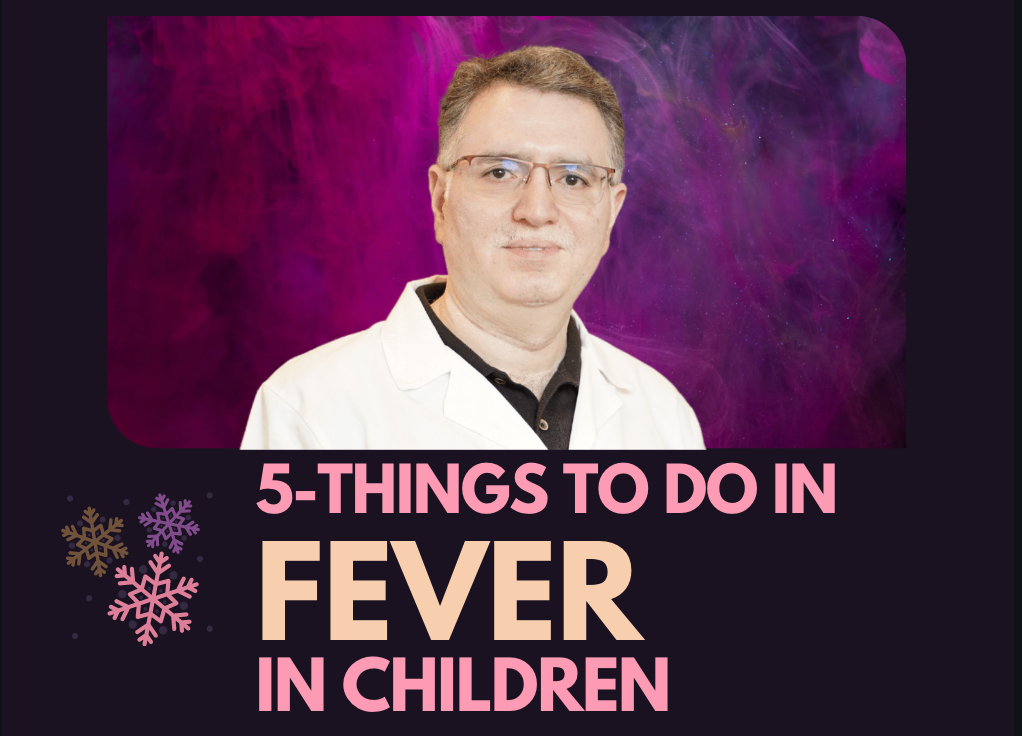Normal body temperature is around 37°C (98.6°F), plus or minus about 0.6°.
When the body detects any infection or inflammation, the brain responds by raising the body temperature to help fight the condition.
Fever is a sort of body’s defence mechanism against various types of insults.
A rectal temperature of over 38°C (100.4°F) is considered a fever.
What is fever? Is it a friend or a foe?
A high body temperature is beneficial to us in two ways—firstly, the raised temperature helps in controlling the disease process, and secondly, it is an important sign which tells us that “all is not well” in the body, and hence prompts us to look for the underlying cause.
However, fever does make a child uncomfortable and increases the metabolic needs of the body. Fever itself is neither a friend nor a foe; rather, it is a messenger that brings you notifications whenever your body is responding to an insult.
My baby’s forehead always feels warm when touched. Is it fever?
Touching is a crude and unreliable method of temperature measurement.
A digital thermometer is best for taking temperatures.
Do not use a mercury thermometer, as it is toxic and could break.
The axillary (armpit) method is fairly precise and most commonly used in children. It is however important to realize that the axillary temperature is 0.5–1.0°F lower than the oral temperature while the rectal temperature is 0.5–1.0°F higher than the oral temperature.
When should I consult a paediatric doctor?
For a child <2 years of age
If you record a temperature of 100.4 degrees for more than 1 day, you should visit a Paediatrician.
For a child >2 years of age
If you record a temperature of 100.4 degrees for more than 3 day, you should visit a Paediatrician.
In both the cases above, even if the recorded temperature is 100.4 or less but the child is lethargic (sust), difficult to wake, vomiting, has an unconsolable cry, breathing with difficulty, or has a rash, you must visit your Paediatrician at the earliest.

What should I do when my child develops fever?
When a child develops a fever, the focus should be on finding the underlying cause. Fever is only a symptom, and its aetiology must be established. Fever is treated primarily to reduce the discomfort of child, rather than to just reduce the temperature.
5 Important Things To Do:
- Keep the child well hydrated. Children may lose more fluids during fever.
- Use Medications (acetaminophen, ibuprofen) can be used in doses recommended by a doctor.
- Do not overdress the child. Have him wear loose clothes, as per season
- Tepid sponging with water at 28–30°C can be done to reduce the temperature after medication is administered. Use of icecold water for sponging is not recommended in fever.
- Rest. Rest. Rest: Activity increases body temperature. While the body is fighting an infection, do not waste energy in unnecessary activity. Let the body direct all its efforts towards the task in hand.
Dr Ajay Gupta Talks About Fever in Children at BabyChakra

Can I send him school if fever is mild?
Mild fever with no other symptoms is usually not a reason enough for a child to stay at home. But many schools or childcare centres request a child to not return until at least 24 hours after a fever has subsided.
It is preferred to not send a child to school during febrile illness for the following reasons:
- The child may feel weak, uncomfortable, and dehydrated during fever episodes making it difficult to sit in school.
- The child may have some contagious underlying infection (most viral infections are highly contagious), which may spread to other children.
What is the right way to do sponging?
Sponging should be done by continuous wiping off the body with tepid water from head to toe for 15–20 minutes. Sponging action ensures that water film is constantly moving thus maximizing heat conduction.
A child can also be given a bath with tepid water during a fever. Bathing can actually help bring down your fever.
Young infants (<3 months old) should not be kept exposed for long due to the risk of hypothermia and sponging may be preferred in this age group
Should I give antibiotics for fever?
Fever in children is most commonly caused by viral infections. Antibiotics are drugs used specifically against bacterial infections. They are not effective against viruses, and their indiscriminate use for every febrile illness is not warranted.
In a febrile illness, your doctor will decide whether the child needs antibiotics, depending on if he/she is suspecting a bacterial infection.
My child does not want to eat anything during fever. What should I do?
The discomfort and muscle aches associated with fever may make a child fussy and dull. It is important to maintain hydration during fever, and the child should be encouraged to take small sips of water and light meals during illness.
Complete inability to take anything (even fluids and breast milk) from the mouth is an indication to visit your doctor.
When should I be worried for fever?
Most febrile illnesses are not serious. However, you should visit the paediatrician immediately if your child is younger than 3 months old or has any of the following:
- Extreme lethargy, drowsiness, excessive cry or irritability.
- Vomiting everything and/or not being able to accept feeds orally.
- Headache, neck stiffness or breathing difficulty.
- Abnormal body movements or abnormal behaviour.
- Temperature above 104°F
- Fever persists for more than 5 days.
What should make me feel relaxed?
Similarly, in a febrile child following signs should make you relaxed:
- Playful and active during interfebrile period.
- Acts like himself/herself during most of the day.
- Feeding well.
- Passing urine normally
Is it true that high fever can lead to seizures and brain damage in children?
Febrile seizures are convulsions that can occur in a child with fever. These seizures usually occur in kids 6 months to 5 years old. Children are more likely to have a febrile seizure if they have a family history of same, or if they have already had one in the past. Most children outgrow having febrile seizures by the time, they are 5 years old. There is no evidence that intensity of fever is linked to probability of having febrile seizures or brain damage in children. Also, these seizures do not increase the risk of further epilepsy.
My baby’s fever does not come down to normal even after giving paracetamol. Can I use other medicines?
Paracetamol (acetaminophen) is the safest drug for the fever to be used in children. If given in a correct dose (15 mg/kg body weight), it brings symptomatic relief.
Remember, the purpose of fever medicine is not to bring down the temperature to a normal level, but to provide symptomatic relief to the child by reducing pain and discomfort.
If the initial fever was high, say 104°F, administration of paracetamol may bring it down to 101°F and not make the child afebrile.
In children who are unable to take it orally, your doctor may decide to give a paracetamol suppository through the rectal route.
Avoid overdosing if the fever does not normalize. You can repeat the next dose after 4–6 hours if required.
Other medicines (ibuprofen, and mefenamic acid) are also available and should be used only in consultation with your paediatrician.
What not to do in fever?
- Do not overclothe the child. Keep him/her in a cool airy environment.
- Do not sponge the child with cold water or ice. Always use tepid water (28–30°C), if needed.
- Do not use aspirin or nimesulide to control fever. Paracetamol is safest.
- Do not keep treating fever at home or by yourself. Consult a paediatrician at the earliest.

A lot of Thanks for sharing the valuable information
thanks